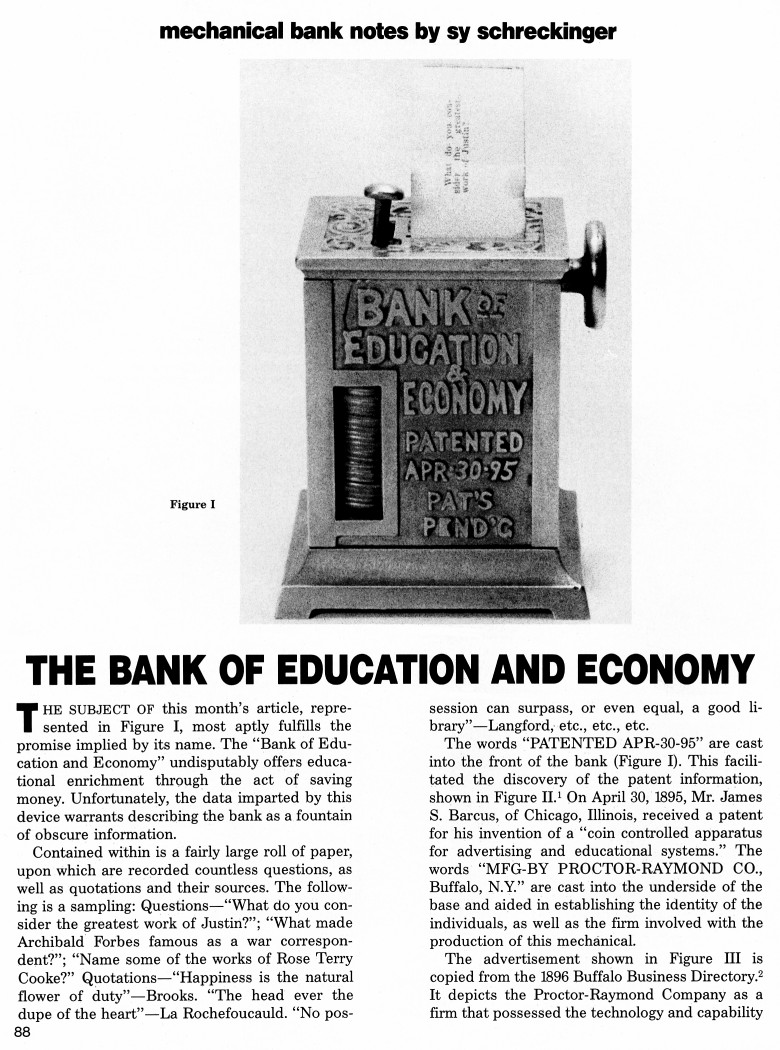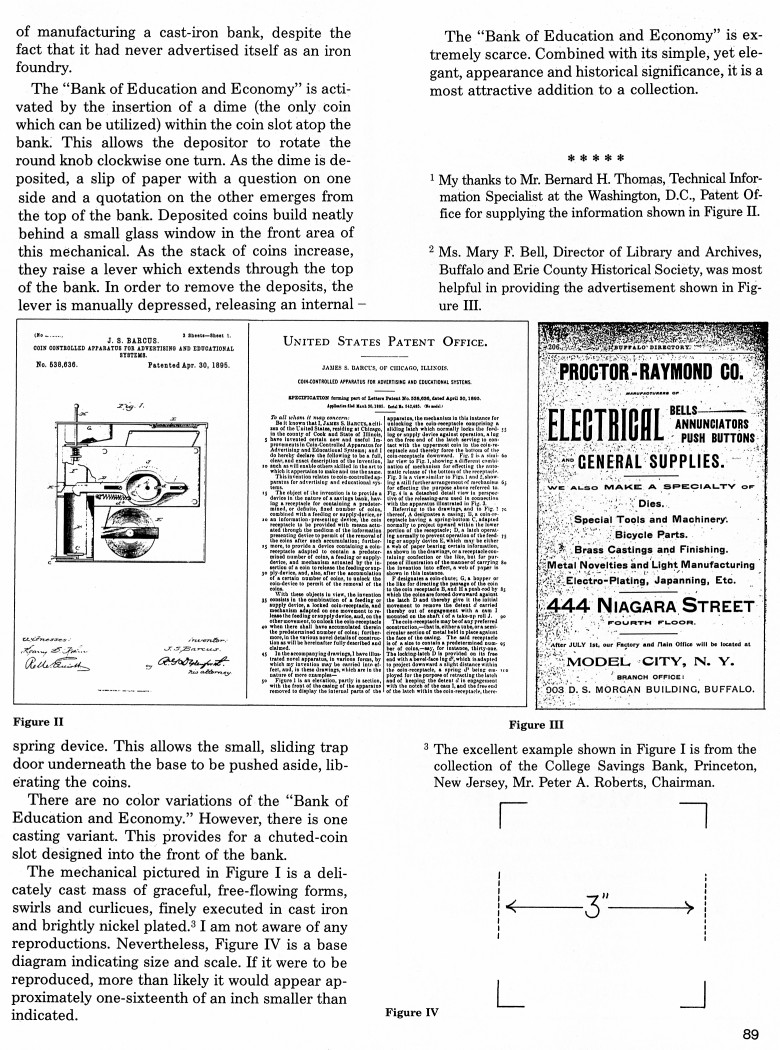|
The Bank of Education and Economy
by Sy Schreckinger – ANTIQUE TOY WORLD Magazine – March, 1992
The subject of this month's article,
represented in Figure I, most aptly fulfills the promise implied by its
name. The "Bank of Education and Economy" undisputedly offers
educational enrichment through the act of saving money. Unfortunately,
the data imparted by this device warrants describing the bank as a
fountain of obscure information.
Contained within is a fairly large roll of paper, upon which are
recorded countless questions, as well as quotations and their sources. The
following is a sampling: Questions — "What do you consider the greatest work
of Justin?"; "What made Archibald Forbes famous as a war correspondent?";
"Name some of the works of Rose Terry Cooke?" Quotations — "Happiness is the
natural flower of duty" — Brooks. "The head ever the dupe of the heart" — La Rochefoucauld. "No possession can surpass, or even equal, a good
library" — Langford, etc., etc., etc.
The words "PATENTED APR-30-95" are cast into the front of the bank
(Figure I). This facilitated the discovery of the patent information,
shown in Figure II.' On
April 30, 1895, Mr. James S. Barcus, of Chicago,
Illinois, received a patent for his invention of a "coin controlled
apparatus for advertising and educational systems." The words "MFG-BY
PROCTOR-RAYMOND CO., Buffalo, N.Y." are cast into the underside of the
base and aided in establishing the identity of the individuals, as well as
the firm involved with the production of this mechanical.
The advertisement shown in Figure III is copied from the 1896 Buffalo
Business Directory.' It depicts the Proctor-Raymond Company as a firm that
possessed the technology and capability of manufacturing a cast-iron bank,
despite the fact that it had never advertised itself as an iron foundry.
The "Bank of Education and Economy" is activated by the insertion of
a dime (the only coin which can be utilized) within the coin slot atop the
bank. This allows the depositor to rotate the round knob clockwise one
turn. As the dime is deposited, a slip of paper with a question on one
side and a quotation on the other emerges from the top of the bank.
Deposited coins build neatly behind a small glass window in the front area
of this mechanical. As the stack of coins increase, they raise a lever
which extends through the top of the bank. In order to remove the
deposits, the lever is manually depressed, releasing an internal spring
device. This allows the small, sliding trap door underneath the base to be
pushed aside, liberating the coins.
There are no color variations of the "Bank of Education and Economy."
However, there is one casting variant. This provides for a chuted-coin
slot designed into the front of the bank.
The mechanical pictured in Figure I is a delicately cast mass of
graceful, free-flowing forms, swirls and curlicues, finely executed in
cast iron and brightly nickel plated. I am not aware of any reproductions.
Nevertheless, Figure IV is a base diagram indicating size and scale. If it
were to be reproduced, more than likely it would appear approximately
one-sixteenth of an inch smaller than indicated.
The "Bank of Education and Economy" is extremely scarce. Combined
with its simple, yet elegant, appearance and historical significance, it
is a most attractive addition to a collection.
*****
1) My thanks to Mr. Bernard H. Thomas, Technical Information
Specialist at the Washington, D.C., Patent Office for supplying the
information shown in Figure II.
2) Ms. Mary F. Bell, Director of Library and Archives, Buffalo and
Erie County Historical Society, was most helpful in providing the
advertisement shown in Figure III.
3) The excellent example shown in Figure I is from the collection
of the College Savings Bank, Princeton, New Jersey, Mr. Peter A. Roberts,
Chairman.
|


